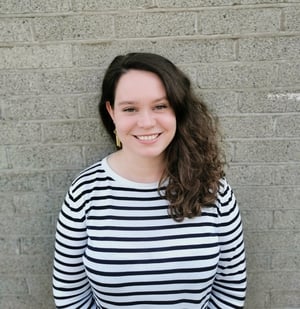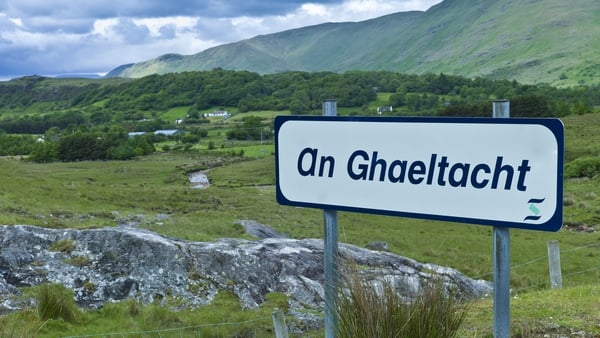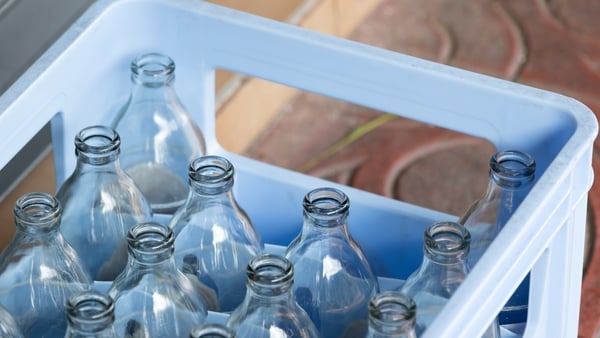Data: we should be planting millions of trees every year for biodiversity and climate change, so why are we consistently falling short of our targets?
Planting trees where there weren’t any before is a big part of how Ireland plans to achieve its national goal of 18% forest cover by 2050. We’re currently at 11,6% so it’s a modest target compared with what our land used to look like before agriculture took over when 80% of Ireland was covered in forest.
But we can’t go back in time to bring back our ancient woodlands. Nearly three decades ago, the Government introduced an ambitious plan of planting 20,000 hectares (ha) of forest a year. Rates of afforestation - planting trees on land where there weren't any before - had reached a high of 23,710ha in 1995.
We never got there though and the annual afforestation target has been reduced to 8,000ha in recent years. Croke Park's pitch is about 12,760 square metres, so you’d need to plant around 6,000 Croke Park pitches to get to this target. The Government previously estimated that this amounts to around 22 million trees a year, or 440 million trees by 2040.
We need your consent to load this rte-player contentWe use rte-player to manage extra content that can set cookies on your device and collect data about your activity. Please review their details and accept them to load the content.Manage Preferences
From RTÉ Radio 1's Mooney Goes Wild, Terry Flanagan talks to forester Justin Good who has planted 80,000 trees on his land near Belturbet, Co Cavan
But Central Statistics Office figures show that we've been missing our afforestation target every single year for at least a decade. Planting reached a high of 8,314 hectares in 2010 and a new low of 2,016 hectares in 2021, just 25% of the target. The data shows a steady decline in afforestation from 2016 onwards.
Afforestation is met with a number of challenges, says Dr Ken Boyle, lecturer in Environmental Science in the Department of Environment & Planning at TU Dublin. "The state was the driver in terms of afforestation in Ireland through much of the 20th century. But as Coillte became a commercial operation, one of the difficulties the State always had was acquiring land and paying for land. So they afforested very poor agricultural land and a lot of our well established forests are now on peatland soils."
We need your consent to load this Datawrapper contentWe use Datawrapper to manage extra content that can set cookies on your device and collect data about your activity. Please review their details and accept them to load the content.Manage Preferences
But by the 1990s and at the beginning of this century a lot of afforestation was driven by EU grants, drawing in the private sector and farmers. "I suspect that a lot of the land that farmers are willing to give up for forestry has already been planted and so we're coming up against a barrier to further planting there by farmers," says Boyle. Farmers with good quality agricultural land are now faced with an option: do they continue with their current farming enterprise or do they move to forestry.
The figures show the share of farmers opting for afforestation on their land is declining. The share of new afforested area planted by farmers in 2021 was 18%, a sharp decline from their share of 97% in 2014. The main contributors are now private non-farmers, but farmers are still seen as a main target by Government for afforestation: a €1.3billion forestry programme was announced in November 2022, which included increased grant premiums. More than half (411,484 ha or 50.9%) of forests are in private ownership and 397,364 ha (49.1%) in public ownership, and the share of private forest owners is growing.
We need your consent to load this Datawrapper contentWe use Datawrapper to manage extra content that can set cookies on your device and collect data about your activity. Please review their details and accept them to load the content.Manage Preferences
The falling levels of afforestation and involvement of farmers also "reflects an absence of an afforestation culture in Ireland," says Boyle. "We've had ongoing afforestation over the years. But what we're trying to do is establish this bank of forestry in the country. There may be other things playing into this as well, but some of what we're talking about is for biodiversity and it's for carbon sequestration. You might ask; where is the money in that?"
Boyle points out we could be putting a monetary value on planting forests for carbon storage: "carbon emissions can be priced and we can put a value on carbon," he says. Boyle uses the example of Danish fast fashion billionaire Anders Holch Povlsen who is the largest land owner in the Scottish highlands. "In part, he is using the uplands of Scotland as a store for carbon and to offset his emissions. So there is a market there."
We need your consent to load this rte-player contentWe use rte-player to manage extra content that can set cookies on your device and collect data about your activity. Please review their details and accept them to load the content.Manage Preferences
From RTÉ News, plan to restore native forest to 4,000 acres in Co Clare
The idea of trees acting as carbon sinks is partly why the government sees increasing Ireland's forest cover as key in achieving our climate action goals: we can’t achieve net zero emissions by 2050 without forest cover and a carbon sink. In January 2022, Chair of the Climate Change Advisory Council Marie Donnelly told the Oireachtas Joint Committee on Environment and Climate Action that Ireland is in "a serious hole" when it comes to afforestation, "and it is an immediate and urgent challenge to get the policies right to reverse that."
"I hadn’t realised that our forest sink was degrading and likely to disappear between now and 2030 and that therefore we would find ourselves in an extremely difficult position, not just for 2030," she said. "Indeed, if you project out to 2050 — if we don’t have sufficient forest and forest sink — we would not be able to achieve a net-zero position by 2050."
We need your consent to load this rte-player contentWe use rte-player to manage extra content that can set cookies on your device and collect data about your activity. Please review their details and accept them to load the content.Manage Preferences
From RTÉ News, Coillte plans to plant 100,000 hectares of new forest in Ireland
Establishing these forests for biodiversity and as carbon sinks has to be seen as a long term, intergenerational project, says Boyle. "It's not the person who plants those trees, they're getting their payments for them — but if there is a benefit, it's going to come in future generations." Right now, 70% of our forests are less than 30 years old, according to the National Forestry Inventory.
The figures show the majority (59%) of afforestation in 2021 was still fast-growing conifer species that will be harvested to produce timber. Overall, broadleaf tree species account for nearly one-third (30.6%) of the stocked forest area in Ireland, while conifer species represent two-thirds (69.4%), according to the NFI.
The majority of those conifers is the infamous Sitka Spruce. Sitka was initially considered "a wonder tree," says Boyle. It's a very high yielding non-native tree, originally from northwest America, which came into Ireland about 100 years ago. It grows well in the moist Irish climate, on peat and poor agricultural soils. In Ireland, we essentially grow it like a crop to be harvested. But while there may be a business case for Sitka, it would be hard to make a biodiversity case for it.
We need your consent to load this Datawrapper contentWe use Datawrapper to manage extra content that can set cookies on your device and collect data about your activity. Please review their details and accept them to load the content.Manage Preferences
Because it’s non-native it’s creating an environment that’s really species poor, explains Boyle. There’s no insect populations that have evolved with the tree. The conifer needles that fall off create a mat on the forest floor that doesn't decompose very easily, which has implications for soil chemistry and for the animals that are living in the soil beneath that forest. Commercial conifer trees are also planted very densely, with very little light reaching the forest floor, so you don’t see other vegetation growing there. "Your whole ecosystem is very much based around just one species of tree, that is not native," he says.
By contrast, there are insects and bird species that have been associated with our native broadleaf trees for thousands of years in the Irish landscape. "Immediately you've got this cycle of movement of nutrients from the trees, into the soil, into the soil organisms and then back into the trees the following growing season." What you have, is an ecosystem with longevity and biodiversity in it, he says. Numbers vary, but you get hundreds of species of insect on an oak tree and that allows for more bird species and for other mammals in the environment.
We need your consent to load this Datawrapper contentWe use Datawrapper to manage extra content that can set cookies on your device and collect data about your activity. Please review their details and accept them to load the content.Manage Preferences
"30 years ago people weren't thinking much about biodiversity and carbon storage, but these have become prominent goals in afforestation," says Boyle — if not the primary ones. But if we want to store carbon in forests we have to think about the soil because that's one of the most significant sites for carbon storage, he adds.
"In the existing forest estate, I think over 80% of the carbon stored in the forests, is stored in the soils. Of course, that's because a lot of those forest soils are blanket bog and raised bogs. But there’s a lot of carbon stored in the forest soils in Ireland and we have to be aware of that." To establish storage banks of carbon, these forests have to be kept intact — as opposed to harvested like spruce — potentially for a very long time, so we don’t disturb the soils. "The less disturbance there is to the forest the less carbon is lost out of the system."
We need your consent to load this Datawrapper contentWe use Datawrapper to manage extra content that can set cookies on your device and collect data about your activity. Please review their details and accept them to load the content.Manage Preferences
To get that biodiversity payback and to see the benefits of carbon storage, we have to plant native trees and we have to largely leave it alone. "It looks terrible when you look at those figures, they're quite stark. You can see the challenge that lies ahead," says Boyle.
But if we want farmers to get back in the game, we have to incentivise them. "As long as other enterprises are attractive for farmers, why are they going to move into forestry? If they are going to go into this, then we have to see it as, they’re going to store carbon to offset emissions in other sectors. Of course we could say, well agriculture has been very unwilling to make cutbacks too, but in time I suspect those things will change too," he adds. "The compensations then would be that the farmer is now in a sense banking carbon for the state, for society at large — and society at large is paying the farmer the price for that."
The views expressed here are those of the author and do not represent or reflect the views of RTÉ







